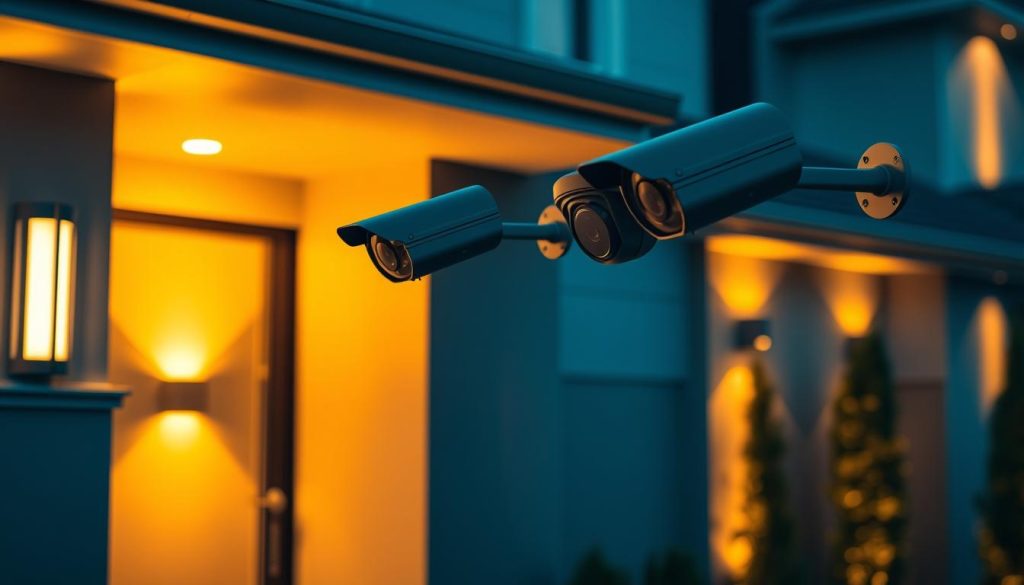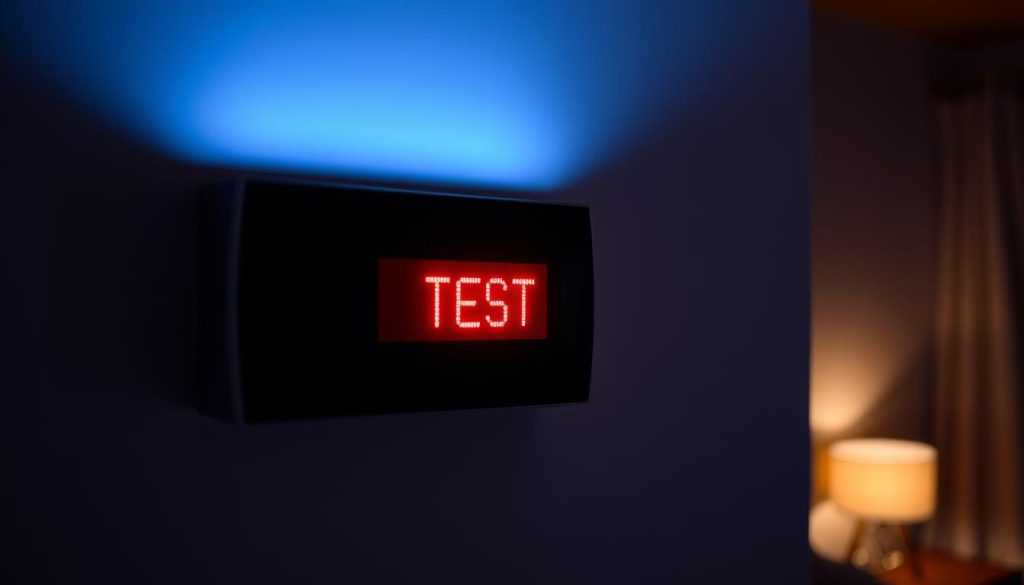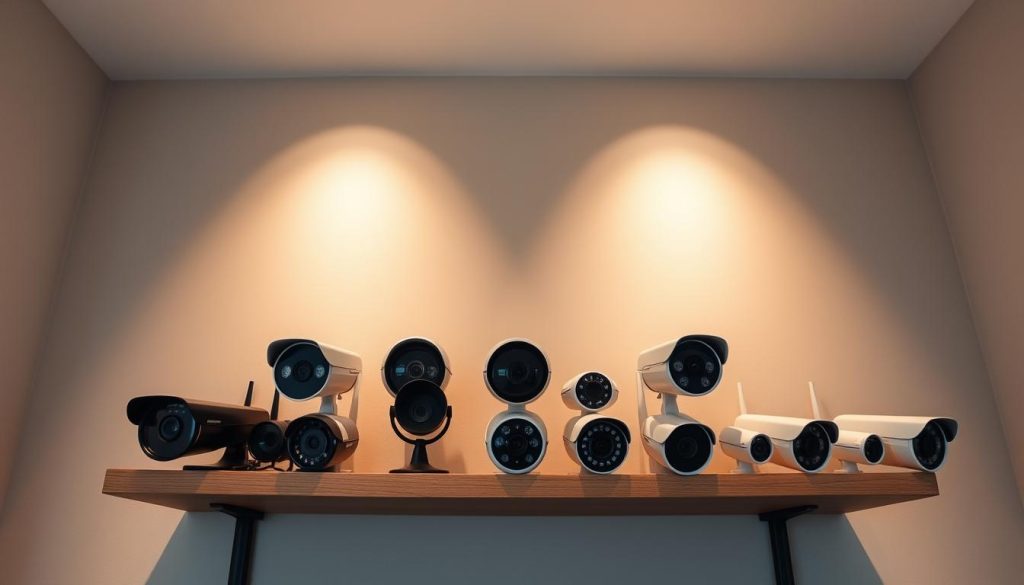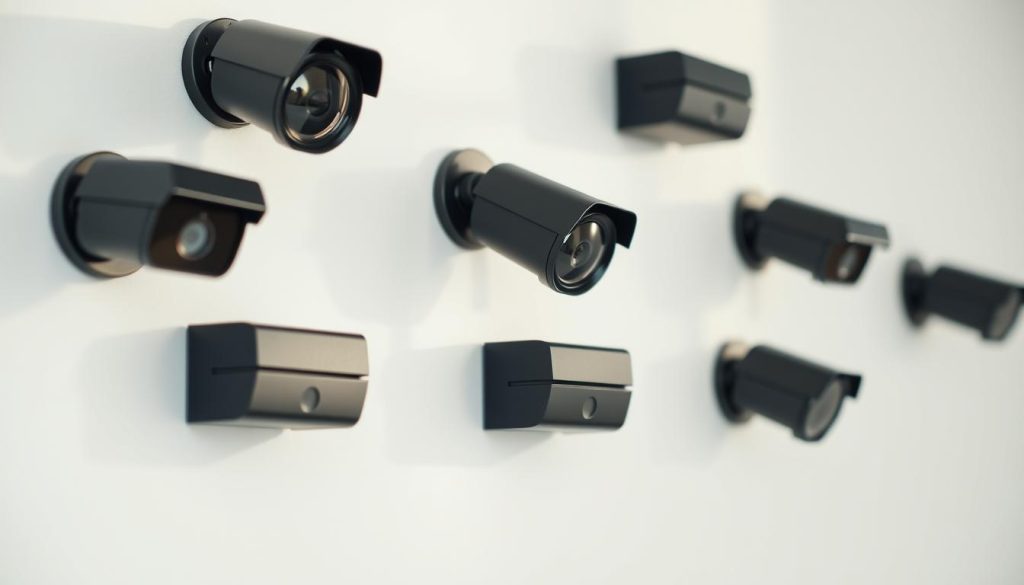This short guide shows you a simple checklist that keeps your home security system reliable without a lot of fuss.
You’ll spend a little time each week and month to make sure sensors, the control panel, and batteries work. Regular upkeep prevents missed alerts, false alarms, and costly repairs.
Monthly steps include testing the control panel battery backup and checking camera and doorbell battery levels. Quarterly checks cover lens cleaning, angle adjustment, and DVR health. Semi-annual walk-tests and occasional professional calibration stop missed detections.
Use an annual review to adjust coverage for pets, new structures, or growing foliage. Budget about 1–3% of your home value per year for parts, service calls, and replacements so alarms keep working when you need them.
Key Takeaways
- Follow a short guide and checklist so each component stays reliable.
- Do quick app checks and dust the control panel every week.
- Test battery backups and sensor function monthly and quarterly.
- Run semi-annual walk-tests and call a pro if false alarms persist.
- Review coverage and aging equipment yearly and set a small budget.
Understand Your Home Security System and What Really Needs Upkeep
Start by mapping which parts fail most often so you focus your care where it helps. A clear list lets you spot failures early and avoid false alarms or missed alerts.
How core components break down
Control panel firmware and backup batteries age; dust and grime on the panel can harm communications. If the panel loses links, many devices stop reporting.
Sensors and door contacts are simple but sensitive. Dust, misalignment, or weak batteries create small faults that trigger needless alerts.
Environmental stress and common faults
Motion detectors and cameras suffer from pet hair, spider webs, and humidity. Outdoor cameras can shift in wind, and smart locks bind when frames swell seasonally.
| Component | Frequent Issue | Quick Check |
|---|---|---|
| Control panel | Firmware lag, battery loss, dust | Update software, test backup |
| Entry sensors | Misalignment, dirty contacts | Clean magnets, verify gap |
| Motion detectors | Lens obstructions, weak signal | Clear optics, check battery |
| Cameras / DVR | Dirty lens, shifted mount, storage full | Wipe lens, secure mount, review space |
Your Weekly Quick Wins to Keep Home Security Tight
Short, focused checks each week catch issues before they affect recordings. Spend a few minutes on high-impact tasks that keep the security system reliable and responsive.

Check charge levels in the app
Open your app and confirm wireless cameras and smart locks show healthy battery percentages. Recharge or swap batteries if any drop near 30%.
Dust and clean optics safely
Take one minute to dust the control panel so vents and buttons stay clear. Use a microfiber cloth and spray cleaner on the cloth, never on lenses.
Quick digital cleanup
Glance at local storage and delete old clips. Free space prevents recording failures when you need evidence the most.
- Verify live streams load fast in the app; slow feeds can signal Wi‑Fi issues.
- Check outdoor camera angles after storms; small shifts can miss critical details.
- Scan recent alerts for odd patterns so you can make sure devices behave normally.
| Task | Why it matters | Action |
|---|---|---|
| App battery check | Prevents sudden power loss | Recharge or replace at ~30% |
| Control panel dust | Avoids overheating and signal loss | Wipe vents and buttons weekly |
| Storage cleanup | Keeps recordings active | Delete unneeded clips and monitor space |
Weekly / Monthly Maintenance Routine to Keep Home Security Tight
A short, guided test lets you verify panel links, sensor reports, and battery status without an alarm dispatch.

Call your monitoring company first and place the account in test mode. This prevents an unwanted dispatch while you trigger devices and run panel diagnostics.
Run system diagnostics and walk-tests
Walk each entry and open every door and window. Confirm the panel logs events and that audible chimes and app alerts appear as expected.
Clean and inspect sensors
- Gently brush door/window contacts and glass-break grills.
- Wipe motion optics with a microfiber cloth and alcohol-free cleaner.
- Use a flashlight to check alignment and gap spacing; small shifts cause faults.
Verify backup power and update software
Check the control panel battery status in the panel or app, then check critical device batteries. Replace aging cells proactively.
Update firmware on the panel, cameras, and the app to close security gaps and improve detection accuracy.
| Action | Why it matters | Next step |
|---|---|---|
| Test mode with company | Avoids false dispatch | Run diagnostics, then end mode |
| Sensor cleaning | Prevents false alarms | Brush contacts, wipe lenses |
| Battery & firmware | Maintains uptime | Replace cells, apply updates |
Document any failures by device and location, end test mode with your company, and spot-check notifications so normal monitoring resumes.
Quarterly Tune-Ups: Cameras, Connectivity, and Communication Backups
Quarterly tune-ups help your cameras capture clear evidence and keep network links reliable. Spend a short session cleaning optics, checking mounts, and validating communication paths so your system stays ready during critical moments.

Clean lenses, adjust angles, and inspect weatherproofing
Wipe lenses carefully with a lens-safe solution and microfiber cloth. Remove water spots, film, and seasonal debris like leaves or bird droppings that block views.
Re-tighten brackets and re-aim cameras, especially magnet-mounted outdoor units that shift in wind. Check seals and cable entries and re-seat gaskets or replace UV-worn wrap as needed.
Review storage health and dust control
Open your DVR or NVR menu and prune old files so recordings remain available. Gently clean casings and vents to prevent dust buildup that can harm drives and other equipment.
Strengthen connectivity and test backups
Use your app to confirm each camera streams and shows strong signal. Run a quick bandwidth check during peak use and consider mesh Wi‑Fi if links are weak.
Briefly take your router offline and test cellular backup. Make sure alerts still reach your monitoring center and then restore Wi‑Fi, confirming normal status.
| Action | Why it matters | Quick check |
|---|---|---|
| Lens cleaning | Improves footage clarity | Wipe with lens solution |
| DVR/DVR casing care | Prevents drive failure | Prune files, clean vents |
| Network & backup | Preserves alerts and streams | Signal test, router offline test |
Semi-Annual Checks: Sensor Integrity and Professional Calibration
At the six-month mark, trigger each sensor and step through every motion area to verify dependable coverage.

Perform a full walk-test: Open doors and windows, then make an exaggerated pass through each motion zone. Watch your panel or app for instant logs and alerts.
- Reattach or remount devices that loosened from humidity, pets, or daily use.
- Replace low-use batteries in wireless sensors, remotes, and smoke/CO detectors before they fail.
- If a sensor misses, reseat it, check gap spacing, or re-pair it to the system.
Review alarm logs for repeat false triggers. Recalibration often fixes nuisance alarms by adjusting motion height, angle, or sensitivity.
If problems persist, schedule a professional service visit. Typical company rates range from $150–$300 for calibration, wiring checks, and wireless tests. A tech can tighten backplates, confirm tamper switches click, and test detector sounders so alerts show in your panel and app within seconds.
| Check | Why it matters | Action |
|---|---|---|
| Full walk-test | Validates coverage and system reporting | Trigger every entry and motion zone |
| Battery swaps | Prevents sudden device loss | Replace low-use cells in sensors and detectors |
| Professional tune | Fixes wiring, gaps, and recurring faults | Book a service visit with your company |
Note: This six months check keeps motion sensors and entry points reliable and reduces surprise failures in your home security system.
Annual Strategy Refresh: Adapt, Upgrade, and Verify Coverage
An annual review helps you align system coverage with how your property looks this year.
Walk the grounds and map new sheds, fences, or grown shrubs that block sightlines. Trim or move plants that now obscure cameras and create blind spots.
Adjust motion sensitivity and activity zones so moving branches or pets no longer trigger false alerts. Reposition sensors and cameras where they capture key approaches and avoid nuisance triggers.
Inventory devices and warranties. Note equipment age and list parts older than ten years for replacement rather than repeated fixes.
- Review your warranty and monitoring contract for eligible upgrades or discounted replacement units.
- Compare newer features—improved deterrents, smarter detection, or better camera clarity—before you invest.
- Reassess lighting on entries; one smart floodlight can improve video and deter prowlers.
| Action | Why it matters | Next step |
|---|---|---|
| Yearly property walk | Find new risks and sightline changes | Update device map and notes |
| Warranties & contract review | May unlock free or discounted replacements | Contact provider and claim eligible upgrades |
| Device age check | Old gear hurts system reliability | Replace >10‑year components |
Use this short guide each year to make sure coverage matches your life and that your system and devices are ready when you need them. Run a final check security sweep and document any changes.
Conclusion
A clear checklist is the best way to protect your system and avoid emergency repairs. Use the idea of short, regular checks that cover app battery reads, lens care, and control panel dusting.
Each cycle should include a monthly test mode run, a six months walk-test of motion sensors and entry points, and a yearly review of placement, warranties, and service needs. Log results and keep spare batteries on hand.
This approach turns scattered tasks into a simple plan so your home security system and security cameras stay ready, alerts reach you, and replacements happen before failures.

